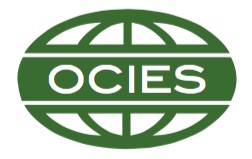From Comparative Education to Comparative Pedagogy: A Physical Education Case Study
Abstract
In the last two decades forces of globalization and the rise of and access to information technology have transformed the nature of educational research. Traditional disciplines such as comparative education have not been immune to these transformational impacts. Although one might expect globalization to promote the study of comparative education, comparative perspectives are yet to permeate many corners of education and little attention has been paid to their potential to inform the area of physical education. This paper argues that comparative education has a unique role to play in informing physical education policy and practice. To support this claim this article presents one particular example: comparative physical education pedagogy.
Therefore this study compared and contrasted two methods of teaching physical education (direct versus indirect) in order to determine which approach is more effective for student learning. The comparison was evaluated and measured for 'enjoyment', 'skill developed' and 'tactical understanding'. Participation in sport at a young age has shown to positively influence young people's physical activity later on in their life. At a time where participation rates in youth sport are dropping significantly and there are high rates of obesity, the results of this study will be of interest to policy makers as the findings have the potential to contribute to new knowledge and practice in education.
Further, by providing a case study for physical education, we demonstrate how comparative education can play a useful and multidimensional role in wide and varied areas of educational research.
Downloads
Published
Issue
Section
License
The International Education Journal: Comparative Perspectives is the official journal of the Oceania Comparative and International Education Society. The IEJ, (ISSN 1443-1475), publishes a general volume bi-annually in July and December and also publishes Special Editions occasionally. It is a free, open-access scholarly journal, managed by volunteers. There are no article processing charges, or any charges to authors.
In relation to intellectual property, as of 2020, the IEJ: CP claims only first publication rights; copyright of all work published in the journal remains with the authors under Creative Commons copyright license CC-BY-ND (4.0). Author(s) retain all rights to their works, ensuring that reference to the International Education Journal: Comparative Perspectives is clearly stated on any copies made or distribution. Submissions must not involve third parties with a claim to copyright, and be the sole work of the author(s). It is the responsibility of the author(s) to secure permission to reproduce photographs, illustrations, figures or tables. Single images, tables or figures can be re-used . If more than a single image or table are to be re-used authors must attribute first publication to IEJ: CP notify the IEJ: CP Editor. Authors may also make derivative works which are subject to these limitations.
See https://creativecommons.org/licenses/by-nd/4.0/ for more detail.
Re-distributed or used material must be referenced to the International Education Journal: Comparative Perspectives.
